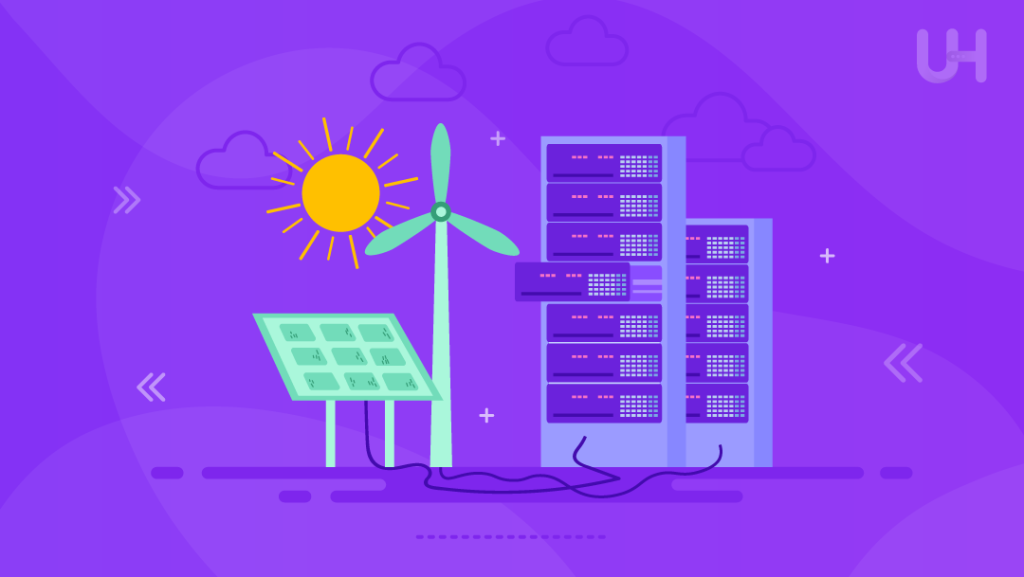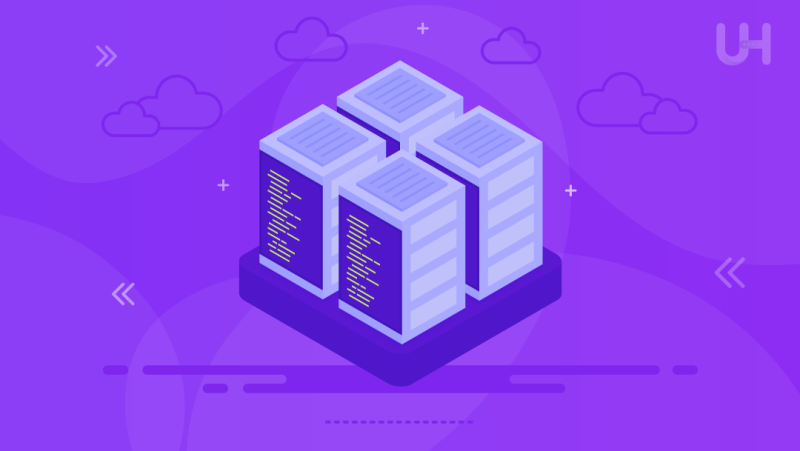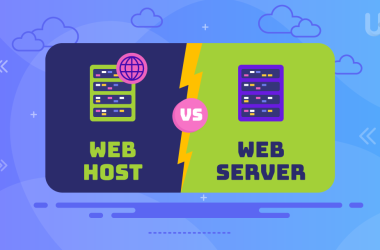A hyperscale data center is a large-scale facility that supports high-demand computing and storage needs. These data centers often host thousands of servers and utilize advanced technologies to maximize performance and minimize costs. They handle massive workloads. This makes them essential for cloud services, big data processing, and various digital applications.
Hyperscale data centers play a crucial role in the modern digital economy. As businesses increasingly rely on data-driven decision-making, the demand for robust computing resources continues to grow. In this blog post, we will explore the key characteristics of hyperscale data centers, their numerous benefits, and the challenges they face. Understanding these aspects will highlight their significance in supporting today’s digital infrastructure.
Understanding Data Centers
Traditional data centers are specialized for IT infrastructure. They manage, process, and store large volumes of data. Their primary purpose is to ensure high availability, reliability, and security of data and applications. This enables organizations to operate digital services effectively. Traditional data centers consist of powerful servers that run applications. They also include storage systems to retain vast amounts of data and networking equipment for communication. These facilities support various use cases such as business operations, web hosting, and cloud services. As a result, they are essential for organizations that rely on digital solutions to drive operations and serve customers.
Overview of Traditional Data Centers
Traditional data centers are specialized facilities that contain critical IT infrastructure. In a traditional data center, IT resources like a server or cloud storage would be occupied with dedicated functions or applications. These facilities store, process, and manage large volumes of data. They enable organizations to run digital services effectively. The main purpose of a traditional data center is to ensure high availability, reliability, and security of data and applications.
Careful design is key, including backup power systems, cooling mechanisms, and physical security measures. These features allow constant access to necessary applications across the organization. Whether for internal operations or customer-facing services, traditional data centers ensure smooth and uninterrupted access.
Storage solutions are critical to store large chunks of data. Examples include DAS (direct attached), NAS (network attached), and SAN (storage area networks), each for different needs for speed as well as capacity. Networking equipment like routers, switches, and web application firewalls also play a critical role in ensuring internal as well as external connectivity. These infrastructures form a backbone for data transfer, communication, and authenticated access to applications.
Typical Use Cases
Most of the typical use cases, such as those across different sectors, have been supported by traditional data centers. A primary use case in business operations involves companies relying on enterprise applications. These include CRM and ERP systems hosted in data centers. Such applications facilitate internal processes and manage customer interactions. This drives operational efficiency.
Another important application of traditional data centers is in cloud services. Most companies use their data centers to provide cloud-based solutions. This gives clients access to software and various services over the Internet. This capability enables businesses to scale their offerings and enhance service delivery to customers.
This includes application hosting platforms for software as a service, storage-related solutions, and virtual machines. The vendors of these scalable solutions to their customers use the traditional data centers for their cloud service provision. However, with increasing demand for these services, traditional data centers become restrictive in meeting increased data requirements by their customers.
Explore the Benefits of Hyperscale Data Center
Ready to elevate your business with cutting-edge infrastructure? Boost your performance with UltaHost’s Fully Managed Dedicated Servers. Get started today and experience unmatched scalability, security, and efficiency!
Transition to Hyperscale Data Centers
Hyperscale data centers differ fundamentally from traditional ones in the way they scale. A hyperscale data center is designed with a modular architecture that can expand to increases in demand for data. That means there’s no need for costly upgrades or painful downtime. Organizations can add more servers, as well as storage capacity, without much hassle. In addition, hyperscale data centers adopt next-generation technologies and automation for increased operational efficiency. This includes energy management systems that optimize power consumption and cooling technologies that reduce energy costs. Hyperscale facilities overcome the limitations of the traditional data center. It gives businesses the chance to be responsive rapidly to changing adaptive demands in a highly competitive digital space.
Limitations of Traditional Data Centers in Scalability and Efficiency
Traditional data centers face significant limitations in scalability and efficiency, which hinder their ability to adapt to the growing demands of modern computing. One major challenge is the complexity involved in expanding existing infrastructure. As data volumes increase, adding new servers and storage can lead to logistical difficulties, requiring extensive planning and resources. This complexity often results in longer deployment times and increased operational costs. Moreover, traditional data centers may not utilize resources effectively, leading to underutilization of hardware and higher energy consumption, which impacts overall efficiency. This development was driven by the need to optimize the use of server resources, reduce costs, and enhance the flexibility of colocation data center operations.
Another critical limitation is the lack of flexibility in traditional data center architectures. The rigid infrastructure can impede the adoption of new technologies, such as cloud services or advanced analytics. As a result, organizations may struggle to keep pace with competitors who leverage more agile hyperscale solutions. To remain viable, many companies are recognizing the need to transition to hyperscale data centers that can provide the scalability and efficiency necessary to thrive in today’s data-driven environment.
Characteristics of Hyperscale Data Centers

Hyperscale data centers offer some of the greatest scales and capacities to provide thousands of servers that can grow rapidly based on emerging information requirements. They are modular by nature and can grow seamlessly and be reconfigured when needed for operations in multiple ways.
Scale and Capacity
Hyperscale data centers are characterized by massive sizes and associated resource capacities. Hyperscale data centers can host thousands of servers, sometimes even thousands per facility. They can scale resources quickly to handle extremely large workloads. These facilities are designed specifically for hyperscale operations. They often cover hundreds of thousands of square feet. This capability allows hyperscale data centers to meet growing demands from cloud computing, big data, and IoT applications. As a result, they are indispensable for modern digital services.
Hyperscale data centers are much more scalable than both conventional and enterprise data centers. Traditional data centers generally have fixed capacities and are strictly resource-intensive and resource-consuming when it comes to expansion.
Design and Architecture
Hyperscale data centers base their design and architecture on modularity, efficiency, and advanced technology. They are designed to easily extend or be reconfigured, as needed, so operators can add resources in real-time or remove them, based on demand. Flexibility is essential because it allows operators to absorb workload changes without resulting in downtime. Almost every module has its own power and cooling systems, which can scale independently based on changing requirements.
The hyperscale data center also often exhibits energy efficiency. Green data centers achieve that in several ways: by optimizing server performance and utilizing the fastest server technology available at any point in time. They tend to use energy-saving technologies such as high-efficiency power supplies and renewable energy for the reduction of operational costs and the environmental footprint of a data center. Besides, it can feature state-of-the-art cooling systems to ensure optimal temperatures within the facility. Techniques used could be liquid cooling, which is effective compared to traditional air cooling, thus reducing energy consumption and promoting overall efficiency.
Automation and Management
Automation plays a very critical role in hyperscale data centers, whereby the software manages nearly all the functions such as resource allocation, monitoring, and fault detection, providing operators with a very high order of efficiency and reliability. It maximizes the efficiency of data centers’ operations, enabling minimal manual intervention, which reduces the risk of human error. The dynamic scaling of resources facilitated by automated systems allows data center operations to keep pace with the fluctuations in demand.
AI and machine learning are increasingly applied for optimization in hyperscale data centers wherein sophisticated tools look for the pattern in the vast stores of operational data to predict future resource needs. Due to the integration of AI, hyperscale data centers can optimize energy consumption, improve cooling strategies, and enhance overall performance. Therefore, with the integration of AI and machine learning, hyperscale data centers cannot only increase operational efficiency but also make proactive maintenance possible, which in turn achieves minimized downtime and better service reliability.
Interconnectivity and Networking
The interconnectivity of hyperscale data centers is very fast, which allows for data transfer between a server and another or other infrastructure components. These are designed to pass large volumes of traffic so that applications move with higher smoothness and efficiency. High-speed networking technologies like fiber optics enable communication and data transfer between facilities and external networks at the speed of light. In other words, it is indispensable for supporting the demands of cloud services and applications data-intensive in nature.
For such data centers, they also rely on network infrastructure redundancy and reliability. Such facilities ensure the working of several paths and connections, which ensures that the facility can continue working even in case of hardware failure or when a network outage occurs. This redundancy minimizes downtime occurrence while delivering overall system reliability. By creating optimal performance coupled with interconnectivity in hyperscale data centers as well as robust networking strategies, hyperscale data centers will hence well meet the rising needs of modern digital services.
Benefits of Hyperscale Data Centers
Hyperscale data centers include a lot of advantages, such as economies of scale translated into low overall operating expenses. The performance is enhanced by a fast and reliable data processing capacity capable of handling massive workloads. Scalability and adaptability that enable hyperscale data centers to deploy and adapt quickly to business needs are offered. These data centers improve energy efficiency through the deployment of renewable sources of energy and other power consumption management techniques, which also means lower operational costs and sustainability.
Cost Effective
Hyperscale data centers are cost-effective primarily through economies of scale. A huge amount of computing power and storage under one roof helps in reducing the cost per unit of hardware as well as the energy that is required for it. This helps in better bargaining with vendors and resource utilization eventually brings in an overall cost of ownership for IT infrastructure, which reduces.
Moreover, hyperscale data centers involve fewer operational expenses as the centers have wide technological advantages and automation. The minimum numbers of personnel are employed in really streamlined processes and automated systems, making the labor costs very low without compromising the levels of service. Economies of scale through streamlined processes make hyperscale data centers financially attractive to businesses that want to optimize IT investments.
Enhanced Performance
The greatest advantage of hyperscale data centers lies in the efficient processing of information at a speed, thus ensuring the reliability of such processes. Such centers are designed to accommodate massive volumes of data traffic while maintaining response times that guarantee a smooth and effective functioning of all applications. Large amounts of data are processed extremely fast in hyperscale data centers, thanks to strong servers and optimized architectures, which can support real-time analytics and applications with immediate access to information.
Hyperscale data centers also can handle massive workloads efficiently. It’s designed to add up resources dynamically, hence coping with spike demand without affecting levels of performance. Hyperscale data centers also serve well those organizations that require expansion to achieve better competitiveness.
Scalability and Flexibility
Flexibility and scalability have been key aspects of hyperscale data centers. This modularity can allow the business to adjust to changes in the environment without typical downtime and dislocations within the process. As new technologies surface and data needs arise, these hyperscale data centers become agile with adaptation for organizations in an increasingly digital landscape. Simultaneously, hyperscale data centers enable flexible scaling when business needs change. Companies with varying project demands or fluctuating workloads can easily scale up or down. This flexibility helps manage changes due to seasonality or market fluctuations. It is highly beneficial for organizations with variable workloads. This solution optimizes resource use and controls costs. It also allows businesses to focus on innovation and growth.
Improved Energy Efficiency

Another characteristic of hyperscale data centers is improved energy efficiency, therefore being more environment-friendly than other data centers. Most hyperscale facilities use renewable sources of energy like solar or wind power, which helps in reducing the carbon footprint of such data centers. With the inclusion of green technologies in those data centers, the use of fossil fuels can be significantly reduced, therefore leading to environmental sustainability fitting the theme of corporate social responsibility. Green data centers will help attain sustainable IT infrastructure with sustainable business practices.
Innovations in managing the take-up of power further improve the energy efficiency of hyperscale data centers. Advanced cooling such as liquid cooling or hot aisle/cold aisle containment reduces the power cost by maintaining the optimum operating temperatures. For example, intelligent distribution systems monitor and optimize energy usage, providing more efficient use of resources. These energy-efficiency improvements will not only benefit from cost savings but will help drive a more sustainable approach to data center operation, through either reduced energy costs or environmental benefits.
Challenges of Hyperscale Data Centers
Hyperscale data centers face significant challenges. One major challenge is the high initial capital investment for construction and technology. This can be daunting for startups.
Initial Capital Investment
The primary challenge for hyperscale data centers involves the up-front capital investment needed to build it and the technology. Land acquisition, infrastructure development, and advanced technologies will be expensive investments in building a hyperscale facility. The high initial investment can be a barrier for many organizations. This is especially true for small and new start-ups that may lack sufficient funds.
Established companies can afford the additional cost. Compared to other models of IT infrastructure, such as on-premises data centers or cloud storage VPS services, hyperscale can be cost-effective. However, they must consider potential returns. They also need to weigh this investment against the overall economy of their business model.
The economic implications may be very discouraging for startups. They must determine if an investment in a hyperscale data center is possible-thereby supporting growth strategy or market requirements. Established organizations could enjoy economies of scale and typically have easier access to funding compared to the new organizations.
Operational Complexities
Another complexity with hyperscale data centers is operational complexity. These are indeed humongous facilities; thus, sometimes it is difficult to maintain or even manage them. Optimizing performance requires close monitoring of both the hardware as well as the software part of the infrastructure. Such resource-intensive monitoring may be almost impossible for most organizations to undertake.
Organizations need to adopt intensive maintenance protocols to prevent as much downtime as possible and correct anomalies as soon as they occur. This complexity tends to stretch existing IT teams to their limits, and organizations need additional resources and time to continue running them. SLAs (Service level agreements)or uptime guarantees provide facility reliability regarding very limited downtime and consistency in service delivery.
Another important consideration in the management of hyperscale data centers is a competent workforce. The technologies applied at the hyperscale facilities demand expertise in cloud computing, data management, and cybersecurity, which are relatively few to be found. It is also difficult to recruit or retain skilled professionals in a competitive job market.
Therefore, the need to train and develop a capable workforce to effectively deal with the intricacies of hyperscale operations is critical to well-managed hyperscale data centers. Whether through physical means like fireproof safes or digital sanctuaries such as secure cloud storage, the emphasis is on creating a resilient fortress for WordPress data backups, impervious to the perils that might befall the primary data repositories.
Enhance Your Business with Dedicated Hosting
Discover UltaHost’s Dedicated Hosting plans designed to meet your unique needs. Enjoy superior performance, enhanced security, and the flexibility to scale your resources effortlessly.
Environmental Concerns
The hyperscale data centers have major issues concerning environmental factors. The data centers consume gigantic amounts of energy; because of that, it raises questions concerning energy consumption and carbon footprint. The ever-increasing demand for data processing demands more and more energy supply from nonrenewable sources. All this boosts the emission of greenhouse gases and slowly degrades the environment. That is why regulatory bodies and public opinion turn against hyperscale data centers.
Besides the energy usage issue, the hyperscale data centers also have sustainability issues emanating from e-waste. The pace at which technology develops is a surety to render hardware obsolete within the shortest time, thus generating large quantities of e-waste. Proper disposal and recycling of such equipment are of utmost importance to mitigate any possible environmental hazards. Organizations need to streamline their ways of doing business to focus on sustainable practices that would ensure such operations facilitate environmentally compliant settings and cope with the corporate social responsibility agenda.
Security and Privacy Threats
Cybersecurity threats are among the major challenges that hyperscale data centers have, especially as the nature of threats increases. Such centers handle sensitive data in substantial amounts, thus becoming battleground sites for cyber-attacks leading to eventual data breaches, financial loss, and reputation. Organizations will spend heavily on measures to secure sensitive information as well as its infrastructure. All these would also be equipped with mandatory features of robust firewalls, intrusion detection systems, and constant monitoring to identify and respond to threats in real time.
All these must have at the core measure of protecting user information and that they comply with regulations. Hyperscale data centers must follow strict data-protection standards like GDPR or HIPAA. These regulations require specific protocols for handling and storing data. Ensuring compliance is challenging. It involves not only technology solutions but also employee training and awareness programs. Balancing security concerns, privacy issues, and operational efficiency is complex. Operators constantly face these challenges in their daily work processes.
Future Trends in Hyperscale Data Centers
Future trends in hyperscale data centers include the integration of emerging technologies like AI and edge computing, which enhance operational efficiency and reduce network latency.
Emerging Technologies
Rising technologies will play an integral role in forming the hyperscale landscape. Artificial intelligence and machine learning, among others, shift how operations take place at such facilities and enable automation of redundant work, predictive maintenance, as well as resource management. AI-based analytics will allow optimization of energy usage and improved efficiency through requirement analysis.
Sustainability Initiatives
For the hyperscale data center’s future, sustainability initiatives become of high importance when the industry increasingly reacts to environmental concerns that continue to grow. Green technologies and practices associated with renewable energy, energy-efficient cooling, and sustainable building materials are ever more prevalent. Many hyperscale facilities are investing in solar and wind power to reduce their carbon footprint and reliance on fossil fuels.
Besides, the endeavors of industries toward carbon neutrality are gaining a body, and various organizations are envisaging big goals for achieving net-zero status within their operations. Such initiatives have been effective in terms of bringing down the environmental footprint and also in line with consumer and stakeholder values who eagerly look forward to responsible corporate initiatives.
Market Growth Predictions
Hyperscale data centers are expected to continue to grow robustly in terms of market growth due to enhanced cloud services demand. The most glaring reason for this is the increasing number of businesses taking a migration path to cloud-based solutions, and the quantity of that migration creates exponentially more huge demands for expansion and efficient data centers.
New digital services, telecommuting, and applications with structures based on data are pushing businesses into hyperscale data centers further. The opportunities for expansion in developing regions are very promising for hyperscale data centers. Rapid digital transformation in emerging markets triggers increased investment in data centers, thereby catering to both local and global demands. The hyperscale data center market, therefore, is likely to witness exponential growth in the coming years, shaped by innovations and strategic developments.
Conclusion
Hyperscale data centers are defined by their immense scale, cost efficiency, enhanced performance, and advanced technologies. They face challenges such as high initial investments, operational complexities, and environmental concerns, but they continue to evolve with emerging technologies and sustainability initiatives. Looking ahead, hyperscale data centers will play a crucial role in supporting the growing demand for cloud services and adapting to new digital landscapes. As these facilities become increasingly integral to the global economy, readers are encouraged to learn more about data center technology and its impact on our digital future.
Experience seamless performance and scalability with UltaHost’s unlimited bandwidth Virtual Private Server. Our infrastructure ensures optimal reliability for your virtual servers. Benefit from optimum flexibility, unlimited bandwidth, and performance at an unbeatable price.
FAQ
What is a hyperscale data center?
A hyperscale data center is a large facility designed to support high-scale operations, often with thousands of servers, enabling rapid resource scalability.
How do hyperscale data centers differ from traditional data centers?
Hyperscale data centers are built for massive scale and flexibility, while traditional data centers have fixed capacities and may not efficiently accommodate growing demands.
What are the key benefits of hyperscale data centers?
They offer cost efficiency, enhanced performance, scalability, flexibility, and improved energy efficiency through advanced technologies.
What challenges do hyperscale data centers face?
Challenges include high initial capital investment, operational complexities, environmental concerns, and security risks.
How do emerging technologies impact hyperscale data centers?
Technologies like AI and edge computing optimize operations, improve efficiency, and reduce latency in data processing.
What is the role of automation in hyperscale data centers?
Automation streamlines operations, reduces manual intervention, and enhances resource management, increasing overall efficiency.
What is the future outlook for hyperscale data centers?
The future looks promising with increasing demand for cloud services, continued technological advancements, and a strong focus on sustainability in the industry.












